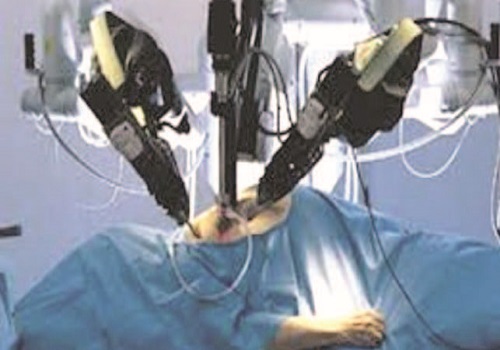Soft tissue normally move and change shape in complex ways as stitching goes on, requiring a surgeon’s skill to respond to these changes and keep suturing as tightly and evenly as possible. The researchers tested their robot against manual surgery, a laparoscopy, by expert surgeons. Laparoscopy is a surgery that enables a surgeon to look at the abdominal organs or the female pelvic organs. Under supervision, STAR proved superior to all approaches in suturing and reconnecting bowel segments, known as intestinal anastomosis, in experiments on pigs.
The animals survived the operation with no complications, the researchers said Equipped with a robotic arm and surgical tools, STAR combines smart imaging technologies and fluorescent markers to navigate and adapt to the complexities of soft tissue. Robotic soft tissue surgery promises substantial benefits through improved safety from reduction of human errors and increased efficiency due to procedure time reduction, they said. Dr Peter Kim, of the Children’s National Medical Centre, Washington DC, said: “Probably the most surprising part was when you compare it to current standards of practice, the machine does it better. Just imagine having the best technology and technique available and having these intelligent systems. It will ultimately have better outcomes and save lives.” He said with further development, autonomous robotic surgery may one day take human error out of the operating room, improving care for patients undergoing bowel surgery, tumour removal and other soft tissue surgery. Meanwhile, a British hospital is using a state-of-the-art robot to perform surgery on cancer patients.
The University Hospital of Wales says the robot has helped to treat more than 350 patients in its first 18 months. The hospital says the surgery, which has been described as the “gold standard” for prostate cancer treatment, has greatly improved outcomes since it was introduced in September 2014. The ground breaking techniques of the £2.5m (about N875m ) robot make operations far less invasive, reduce blood loss and have helped to dramatically reduce patient recovery time. Currently, the equipment is being used three days a week and solely on prostate cancer patients, but there is scope to use it for other procedures in the near future. Krishna Narahari, a consultant urologist at Cardiff and Vale University Health Board, said the new robotic service was having a positive impact in many ways. He said: “The procedure involves more precise surgery, which means patients not only have better experience but also have a quicker recovery and are less likely to suffer a complication. “The success of the robot is also helping to raise awareness of prostate cancer among men, which is a very important message.
“Luckily, there are a number of options for prostate cancer, robotic surgery being one of them, but the really important thing is for it to be detected early.” The innovative robot has three different components – the robotic cart, the surgeon console and the endoscopic stack or column. Consultant urologists use the surgeon console to look at a 3D image of the prostate and operate controls for the robot’s arms as they remove the cancerous lump. MrNarahari added: “Recovery from open surgery normally takes about three to four days. But with this machine, the majority of patients stay overnight – or are even discharged the same day.” Dr Graham Shortland, the medical director for Cardiff and Vale UHB, said there is hope the technology will be expanded into other surgical fields. He added: “Robotic surgery has been a great investment for not only men in Cardiff and the Vale but across Wales. “It’s a great example of Shaping Our Future Wellbeing, our 10-year strategic vision, in action and our commitment to creating outcomes that matter to people, making better use of resources and excelling at teaching, research innovation and improvement.”
Source:MWN

 Can you imagine the operating theatre being run by robots instead of surgeons? Experts believe this could be the trend in the near future. This follows the first successful soft tissue surgery performed recently by an autonomous robot, giving rise to speculations that robots would soon be able to perform complicated operations without human assistance.
Can you imagine the operating theatre being run by robots instead of surgeons? Experts believe this could be the trend in the near future. This follows the first successful soft tissue surgery performed recently by an autonomous robot, giving rise to speculations that robots would soon be able to perform complicated operations without human assistance.




